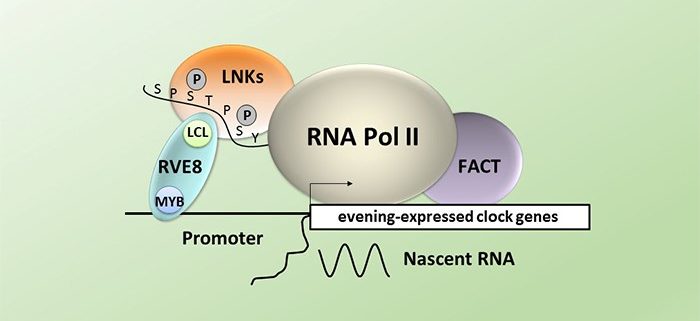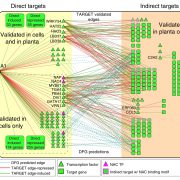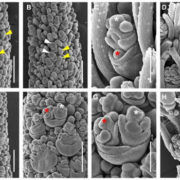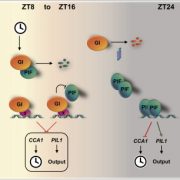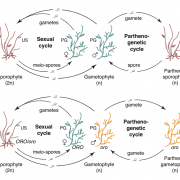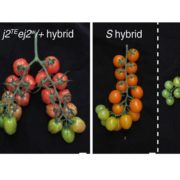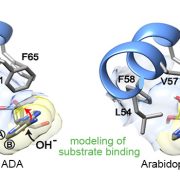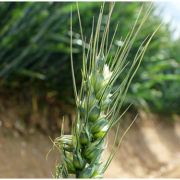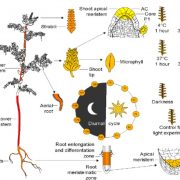How Plants Generate Circadian Rhythms in Transcription
Ma et al. investigate a protein complex that controls steady-state mRNA circadian oscillations https://doi.org/10.1105/tpc.18.00052
By Yuan Ma, Sergio Gil, Klaus D. Grasser and Paloma Mas
Background: Circadian clocks are internal time-keeping mechanisms that help organisms to adapt to the environmental changes that occur during the day and night cycle. In Arabidopsis thaliana, the circadian clock consists of multiple transcriptional regulatory feedback loops. The clock-associated components RVE8 and LNKs were previously shown to interact directly to regulate rhythmic anthocyanin biosynthesis. Together they also act as transcriptional activator and co-activator of the key core clock genes PRR5 and TOC1.
Question: How are the circadian rhythms in PRR5 and TOC1 transcription generated, and what roles are played by RVE8 and LNKs?
Findings: Our studies identified a multi-functional protein complex in which each component exerts specific functions that contribute to the regulation of PRR5 and TOC1 transcription. The MYB domain of RVE8 provides the DNA binding specificity while its LCL domain is responsible for the interaction with LNKs. LNKs in turn recruit RNA Polymerase II and the transcription elongation factor SSRP1 (Structure-Specific Recognition Protein-1) to facilitate the initiation and elongation of clock transcripts. Mutation or inactivation of the protein complex components affect the expression of PRR5 and TOC1 nascent RNAs, delay the mRNA steady-state rising phase and reduce the amplitude. We found that the rhythms in nascent RNA synthesis controlled by the protein complex determine the steady-state mRNA circadian oscillation.
Next steps: It has been reported that LNKs function as transcriptional repressors, so it would be interesting to investigate the molecular mechanisms underlying their repressing function and how they might act as both co-repressors and co-activators.
Ma, Y., Gil, S., Grasser, K.D., and Mas, P. (2018). Targeted recruitment of the transcriptional machinery by LNKs controls circadian rhythms of nascent RNAs in Arabidopsis. Plant Cell 30: 907-924; DOI: https://doi.org/10.1105/tpc.18.00052.
Keywords: circadian clock, transcription, Arabidopsis


